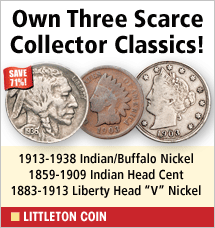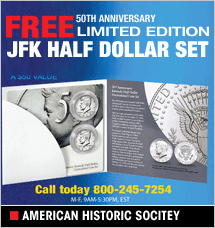
 There are museums dedicated to all manner of people and things. The Smithsonian Institute in Washington, D.C. where it would take years to see everything, claims to be the world’s largest museum complex. At the other end of the spectrum there are small unique museums dedicated to one item. Most were started by someone with a passion for the topic and can be viewed in an hour.
There are museums dedicated to all manner of people and things. The Smithsonian Institute in Washington, D.C. where it would take years to see everything, claims to be the world’s largest museum complex. At the other end of the spectrum there are small unique museums dedicated to one item. Most were started by someone with a passion for the topic and can be viewed in an hour.
- PEZ Museum, Burlington, California: If a person has a passion it is only natural that they want to share. Gary Doss opened a museum in 1995 to share his love of PEZ Candy. He claims to have one of every PEZ dispenser ever sold. He has over 900 of them plus many more PEZ-related items. He also sells PEZ products.
- Triangle Tattoo & Museum, Fort Bragg, California: The museum was founded in 1986 by tattoo artists Mr. G. and Madame Chinchilla. There are samples of tattoos from around the world including images of the Maori of New Zealand with traditional Moko tattoos. “Tattoos without Consent” is a thought-provoking display of tattoos from Germany, China, and Russia.
- The Kregel Windmill Company, Nebraska City, Nebraska: On the prairie where there was no reliable surface water, windmills made living and farming possible. The Kregel Windmill Company, preserved in its 1939 condition, is complete with all the furnishings and tools. The factory turned museum has touch screens to facilitate the self-guided tour.
- Museum of American Speed, Lincoln, Nebraska: “Speedy” Bill and Joyce Smith’s lifetime love of all things associated with racing has become a museum with thousands of items related to racing. There are rare and unique items in displays and dioramas that offers a step into the past.
- Spam Museum, Austin, Minnesota: Dubbed “The Guggenham” the SPAM Museum is home to the world's most comprehensive collection of spiced pork artifacts. Today the product is known worldwide in a large part to its distribution by American soldiers to hungry civilians during WWII. The museum also has family-fun activities.
- The Gangster Museum of America, Hot Springs, Arkansas: Hot Springs is a small town with a big attraction – the thermal water that attracted the rich, famous and infamous. It is only right that a place where the gangsters of the ‘20s, ‘30s and ‘40s went for R&R should have a museum with a gallery dedicated to the likes of Al Capone.
- Uncle Remus, Eatonville, Georgia: The museum, housed in a log cabin, strives to educate visitors about the life and work of Joel Chandler Harris who preserved the African American tales of Br'er Rabbit and Br'er Fox he heard as a boy while working at Turnwold Plantation. Uncle Remus was a composite character drawn from several local slaves who shared the stories with him.
- Jell-O Museum, Le Roy, New York: The story of Jell-O points out the importance of marketing. Well-trained salesmen, in "spanking rigs, drawn by beautiful horses” introduced Jell-O to homemakers at fairs, country gatherings, and church socials as a way to make dessert preparation easier. It became "America's Most Famous Dessert."
- Museum of International Masks and Puppets, Syracuse, New York: Small museums often work in tandem with a similar venture. Such is the case of the Open Hand Theater’s Museum of International Masks and Puppets in Syracuse. Besides their collection of mask and puppets from all over the world they do performances. Their 12-foot stilt puppets are amazing.
- Safe Haven, Oswego, New York: The Museum and Education Center is dedicated to keeping alive the stories of the 982 Jewish refugees from World War II who entered the United States as "guests" of President Franklin D. Roosevelt. These refugees were housed in a “concentrated” compound at Fort Ontario from August 1944 until February 1946.
Sandra Scott travels the globe recording the top attractions at every destination.
Copyright © 2024 Go60.us. All Rights Reserved.





































































